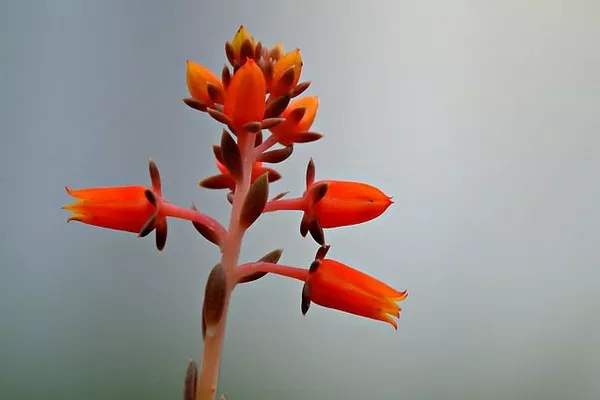Succulents have become wildly popular as indoor plants for their striking appearance, low maintenance requirements, and air-purifying qualities. These hardy plants can thrive in various indoor environments, adding a touch of nature to your home or office. However, proper care is essential to ensure they flourish. In this comprehensive guide, we’ll explore the key factors to consider when caring for succulents indoors, helping you create a thriving succulent garden that lasts for years.
Choosing the Right Succulents
The first step in successful indoor succulent care is selecting the right plants for your environment. Not all succulents are created equal, and some may fare better indoors than others. Consider the following factors when choosing your succulents:
a. Light Requirements: Determine the amount of natural light your indoor space receives. While most succulents love bright, indirect sunlight, some can tolerate lower light conditions, such as Haworthias and Gasterias.
b. Space: Consider the available space for your succulents. Some succulents, like Echeverias and Aeoniums, can grow quite large, while others, like Sedums and Crassulas, stay more compact.
c. Temperature: Most succulents prefer temperatures between 60-80°F (15-27°C). Avoid placing them near drafts or heating/cooling vents, which can cause temperature fluctuations.
d. Humidity: Succulents generally thrive in low humidity environments, making them well-suited for indoor conditions. However, ensure good air circulation to prevent excess moisture buildup around the plants.
Proper Potting and Soil
Choosing the right pot and soil is crucial for indoor succulent care. Here’s what you need to know:
a. Pot Selection: Select pots with drainage holes to prevent waterlogged soil, a common issue with succulents. Terracotta pots are a popular choice due to their porous nature, which aids in moisture regulation.
b. Well-Draining Soil: Use a well-draining succulent potting mix or create your own by mixing potting soil with perlite or coarse sand in a 2:1 ratio. This helps prevent root rot by allowing excess water to escape.
c. Pot Size: Choose pots that are slightly larger than the succulent’s root ball. Too much space can lead to overwatering, while a cramped container restricts growth.
Watering
One of the most critical aspects of indoor succulent care is proper watering. Succulents are adapted to survive in arid conditions, so overwatering is a common mistake. Here’s how to get it right:
a. Watering Frequency: Water your succulents when the top inch (2.5 cm) of soil feels dry to the touch. The frequency depends on factors like temperature, humidity, and pot size but typically ranges from every 2-4 weeks.
b. Watering Technique: When watering, add water gradually until you see excess water draining from the pot’s bottom. Ensure that the roots receive water but avoid letting the plant sit in standing water.
c. Seasonal Adjustments: Succulents may need less water during the dormant winter months. Adjust your watering schedule accordingly.
Lighting
Proper lighting is essential for indoor succulent care. Most succulents thrive in bright, indirect sunlight, but they can adapt to lower light conditions as well. Here’s how to ensure they get the light they need:
a. Natural Light: Place your succulents near a south or west-facing window to receive bright, indirect sunlight. Rotate the pots periodically to ensure even growth.
b. Artificial Light: If natural light is limited, consider using grow lights. LED grow lights provide a balanced spectrum of light suitable for succulents and can be adjusted to the required intensity and duration.
c. Light Duration: Succulents generally need 6-8 hours of light per day. Be cautious not to expose them to intense, direct sunlight for extended periods, as it can lead to sunburn.
Temperature and Humidity
Maintaining the right indoor climate is vital for your succulents’ health:
a. Temperature: Most succulents prefer a daytime temperature range of 60-80°F (15-27°C) and slightly cooler temperatures at night. Avoid extreme temperature fluctuations.
b. Humidity: Succulents are adapted to low humidity environments, but they can still suffer from mold or rot if the air becomes too stagnant. Use a small fan or open windows occasionally to improve air circulation.
Fertilizing
Succulents have modest nutrient requirements, and over-fertilization can harm them. Here are some guidelines for fertilizing indoor succulents:
a. Frequency: Fertilize sparingly, generally during the growing season (spring and summer) every 4-6 weeks. Avoid fertilizing during the dormant winter months.
b. Dilution: Use a balanced, water-soluble fertilizer diluted to half strength. Applying too much fertilizer can lead to excessive growth and weakened plants.
c. Application: Apply fertilizer to damp soil to prevent root burn. Water the plant before or after fertilizing, never when the soil is completely dry.
Pruning and Maintenance
Regular maintenance and pruning help keep your succulents healthy and attractive:
a. Remove Dead or Yellowing Leaves: Trim away dead or yellowing leaves to improve airflow and prevent disease spread.
b. Pinch or Cut for Shape: Pinch or cut back leggy growth to encourage a more compact shape and promote new growth.
c. Repot When Necessary: If your succulent outgrows its pot or becomes root-bound, consider repotting it into a slightly larger container with fresh soil.
d. Check for Pests: Inspect your succulents regularly for signs of pests like mealybugs or spider mites. Treat infestations promptly with appropriate measures.
Conclusion
Caring for succulents indoors can be a rewarding and enjoyable experience. With the right selection, potting, and maintenance, these resilient plants can thrive in various indoor settings, bringing a touch of natural beauty to your home or office. Remember to monitor your succulents closely, adjust care as needed, and enjoy the unique charm they add to your indoor environment. By following the guidelines in this comprehensive guide, you’ll be well on your way to cultivating a healthy and vibrant indoor succulent garden that lasts for years to come.


